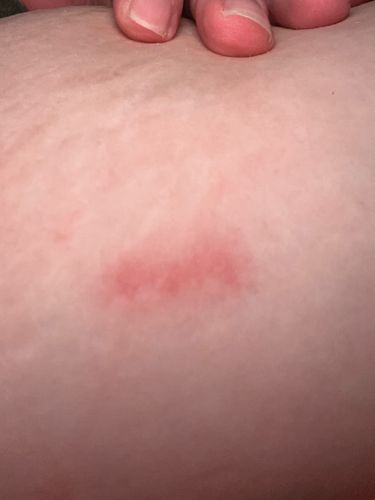Mosquito
Scientific Name: Culicidae (various genera and species)
Order & Family: Diptera, Culicidae
Size: Typically 3 mm to 10 mm (0.12 to 0.4 inches) in length.

Natural Habitat
Mosquitoes are found worldwide in various habitats, especially near standing water sources such as ponds, swamps, marshes, ditches, and even small containers like buckets or clogged gutters. Larvae and pupae live in water, while adults fly.
Diet & Feeding
Adult female mosquitoes feed on blood to obtain nutrients for egg development. Both male and female mosquitoes also feed on nectar and plant juices for energy.
Behavior Patterns
Mosquitoes are most active during dawn and dusk, but some species are active during the day. Females lay eggs individually or in rafts on or near water. Larvae and pupae develop in water, breathing through siphons. Adults are attracted to carbon dioxide, body heat, and certain odors from hosts. The image shows a typical inflamed bite mark, which is a common reaction to mosquito saliva injected during feeding.
Risks & Benefits
Risks: Mosquitoes are significant vectors for numerous diseases, including malaria, dengue fever, Zika virus, West Nile virus, chikungunya, and yellow fever. Their bites can also cause itchy welts and allergic reactions. Benefits: Mosquito larvae and adults serve as a food source for various aquatic and terrestrial animals, including fish, birds, bats, and other insects. They also play a role in pollination, particularly the males.
Identified on: 9/5/2025